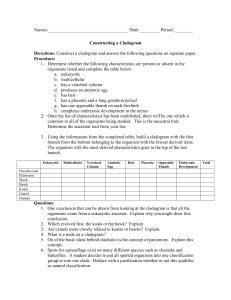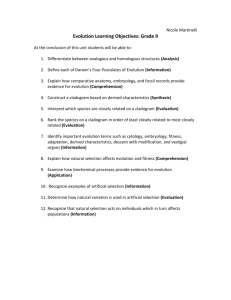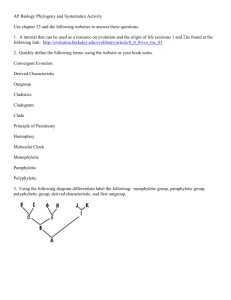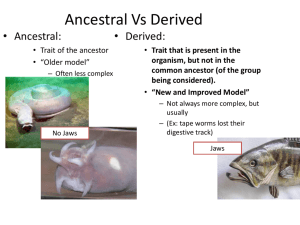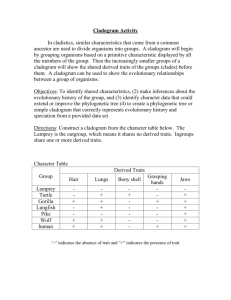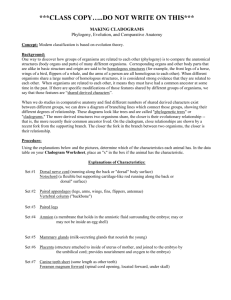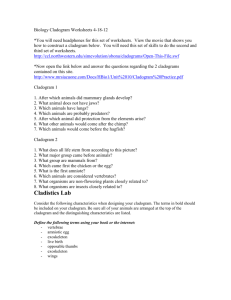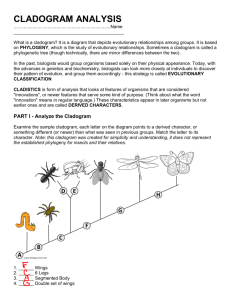AP Biology Cladogram Worksheet: Taxonomy & Phylogeny
advertisement
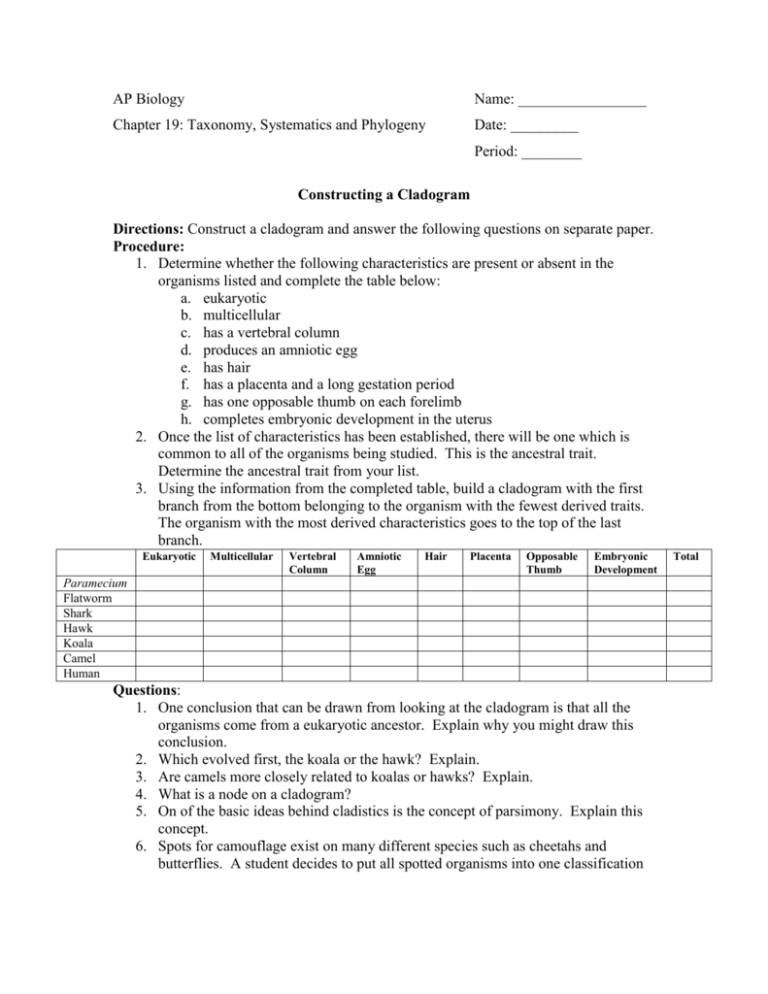
AP Biology Name: _________________ Chapter 19: Taxonomy, Systematics and Phylogeny Date: _________ Period: ________ Constructing a Cladogram Directions: Construct a cladogram and answer the following questions on separate paper. Procedure: 1. Determine whether the following characteristics are present or absent in the organisms listed and complete the table below: a. eukaryotic b. multicellular c. has a vertebral column d. produces an amniotic egg e. has hair f. has a placenta and a long gestation period g. has one opposable thumb on each forelimb h. completes embryonic development in the uterus 2. Once the list of characteristics has been established, there will be one which is common to all of the organisms being studied. This is the ancestral trait. Determine the ancestral trait from your list. 3. Using the information from the completed table, build a cladogram with the first branch from the bottom belonging to the organism with the fewest derived traits. The organism with the most derived characteristics goes to the top of the last branch. Eukaryotic Multicellular Vertebral Column Amniotic Egg Hair Placenta Opposable Thumb Embryonic Development Paramecium Flatworm Shark Hawk Koala Camel Human Questions: 1. One conclusion that can be drawn from looking at the cladogram is that all the organisms come from a eukaryotic ancestor. Explain why you might draw this conclusion. 2. Which evolved first, the koala or the hawk? Explain. 3. Are camels more closely related to koalas or hawks? Explain. 4. What is a node on a cladogram? 5. On of the basic ideas behind cladistics is the concept of parsimony. Explain this concept. 6. Spots for camouflage exist on many different species such as cheetahs and butterflies. A student decides to put all spotted organisms into one classification Total group or into one clade. Deduce with a justification whether or not this qualifies as natural classification.
